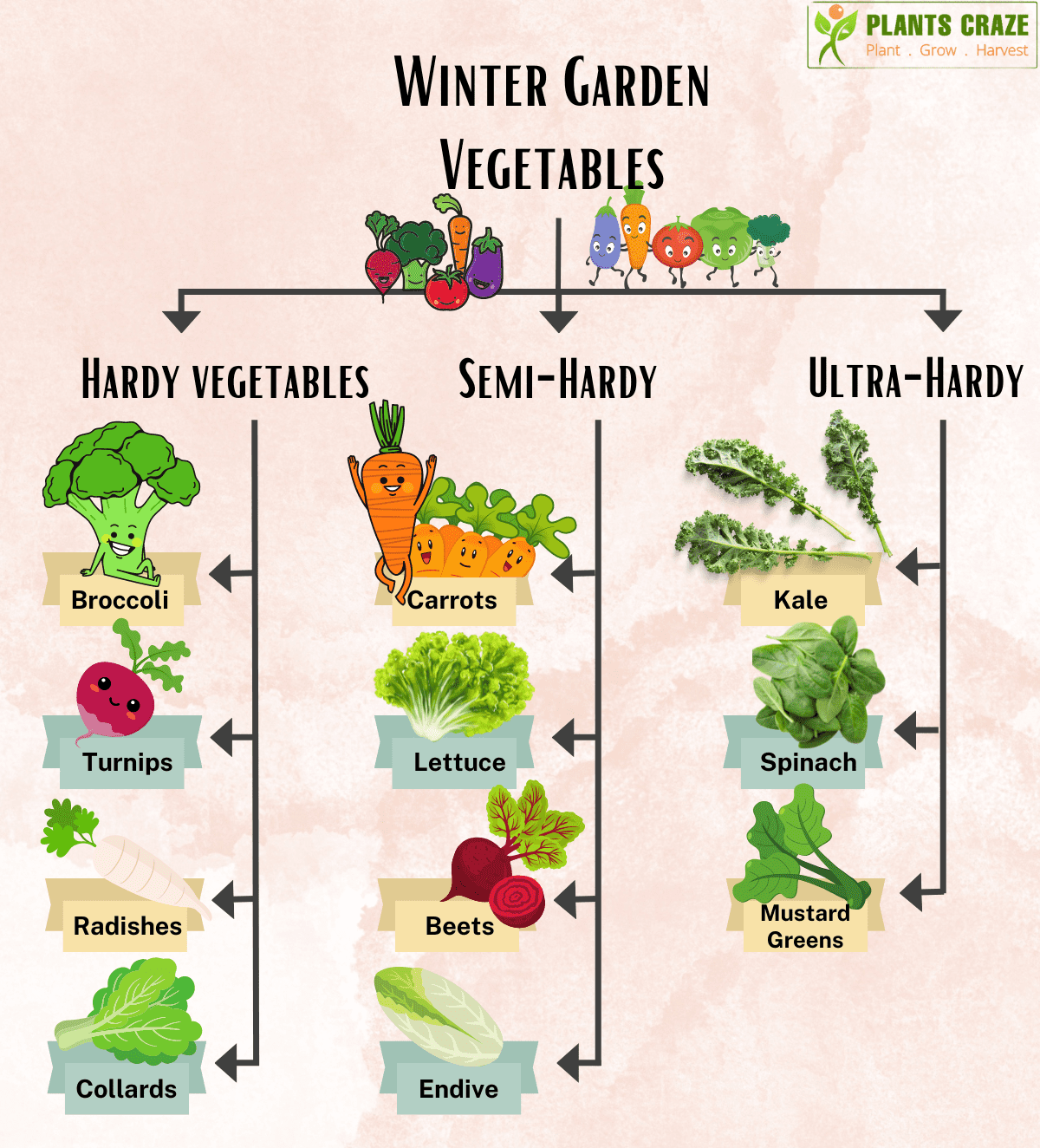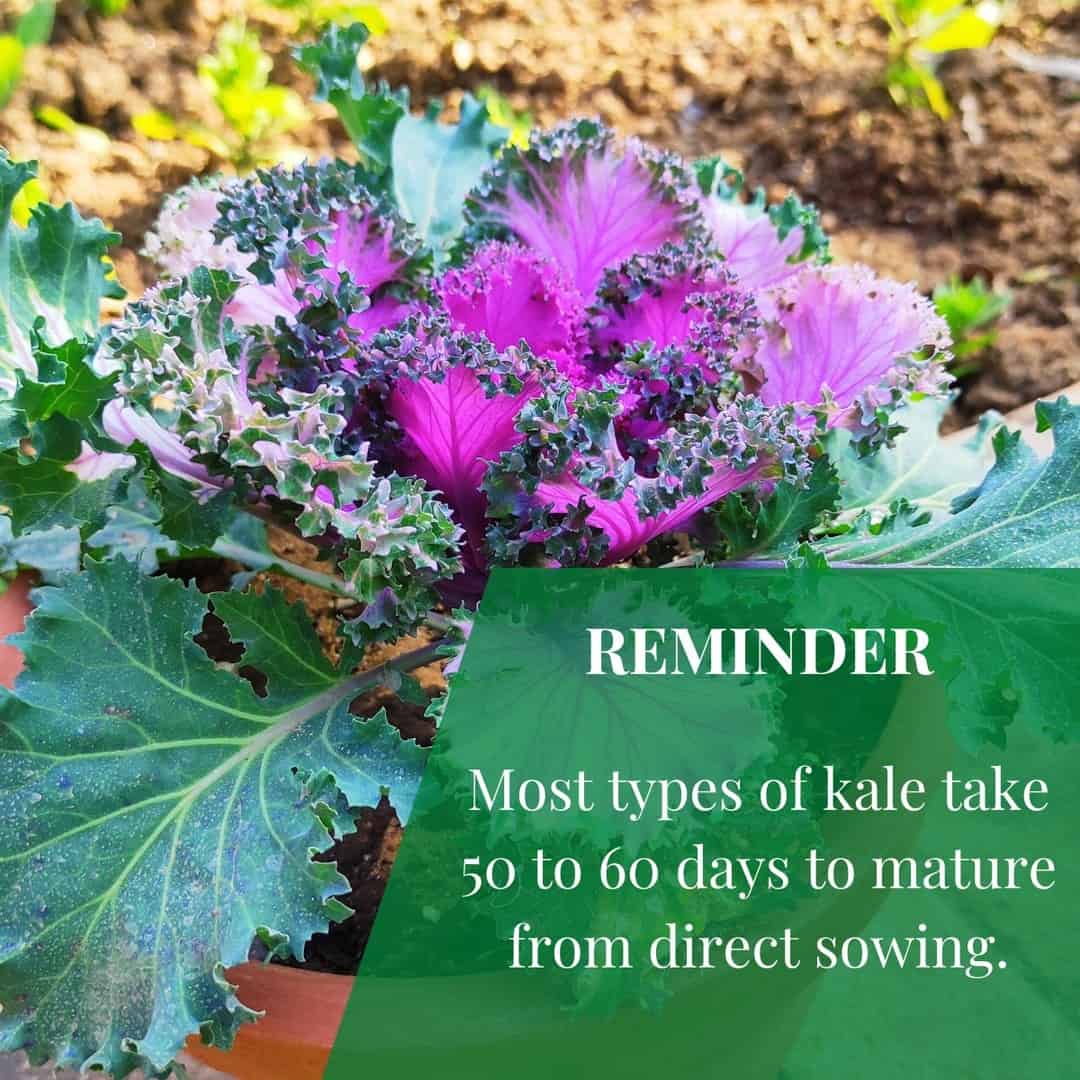One of the significant challenges in growing winter gardens is where to put them if you don’t know about the greenhouse.
Stick with me and continue reading so I can thoroughly guide you and make your table full of green even in winter.
Table of Contents Show
10 Best Winter Vegetables in Garden
If you plan to group summer crops along the row of winter veggies, you may run out of all due to the unfavorable microclimate.

Before you start investing your sweat in producing winter crops, collect the season extender structure.
If you are an early gardener and approach winter crops, get some winter vegetable ideas!
Hardy Vegetables
Hardy vegetables are those vegetables that can withstand hard frosts. Such crops do not lose their composure even in 25°F to 28°F cold temperatures.
Generally, USDA zone 8 and 9 have the coldest temperature that hardy vegetables can tolerate.
Leeks, Turnips, Brussels sprouts, Broccoli, Radishes, English peas and Collards, are some of the winter hardy vegetables.
1. Broccoli
Broccoli is a hardy plant that tolerates cold temperatures up to 24°F without sustaining damage.
For winter harvest, you should sow the seeds during mid-fall and harvest them all winter.
Cover the plants with newspaper or frost blankets to protect them from consistently cold temperatures.

Plant Broccoli in full sun and provide them with nutrient-rich, well-draining, porous soil.
Remember to harvest Broccoli before it begins flowering, usually within two months from seeds.
2. English Peas
Start planting round and firm Peas in the late summer for winter harvest. The Peas prefer loose soil rich in organic manure and germinate under 40-70° F temperature.
As birds love Peas, sow them about an inch deeper and lightly cover them with soil.
Thus, keep your winter vegetables warm by adding a thick layer of organic mulch. This way, they are safe from frost and get nutrients as well.
3. Turnips
Turnips are another fast-growing winter vegetable and should be planted in the fall to expect harvest all winter.
They can survive cold temperatures up to 23°F but will need some protection. So, wisely plant them in a sunny spot.
Sow the Turnips seeds half an inch deep, maintaining an inch distance in airy, loosened soil.
As they detest transplants after having firm rooting, plant them in your winter vegetable garden instead of pots.
Within a month or two, Turnips will be ready to harvest.
4. Collards
Collards are excellent cold hardy winter crops that tolerate temperatures as low as 10°F.
Collards grow fine in a pot of size 10 to 12 inch. Add peat moss, compost, and crummy soil to prepare a mix.
You should plant Collards in October and harvest them after two or more months of the planting date.
Semi-Hardy Vegetables
Semi-hardy veggies can tolerate light frost and withstand cold temperatures up to 29°F to 32°F only.
They can hold their roots within USDA zones nine and above during winter.
Some semi-hardy vegetables are Beets, Lettuce, Swiss chard, Asian green, Endive, Arugula and Carrots.
1. Carrots
To harvest delicious Carrots in winter, you should finish sowing them in September.
Carrots grow best in sandy, loamy soil with well-drainage. Before planting Carrot seedlings, gently plow the garden using a rake.

Most importantly, avoid watering the Carrots in the evening. Too cold water can hurt the plant, resulting in paler, thin roots.
Within 3 to 4 months from seed germination, Carrots will be ready to harvest.
2. Lettuce
To have a table full of green Lettuce in winter, headstart Lettuce indoors in late August or early September.
Get some Lettuce varieties for the winter vegetable garden, including Little gems and winter greens.
Give them rock and stoneless, light, loose soil with well-drainage for optimal growth.
If you can, feed them low-nitrous fertilizer to give Lettuce an additional push for bigger leaves.
Those Lettuce planted in September will be ready for harvest from January to March.
3. Beets
Like Lettuce, you should plant Beets in mid-summer (i.e., September) if you are aiming for winter harvest.
To avoid that utilize frost blankets or floating row fabric. Otherwise, you may try keeping them in a greenhouse.
Provide Beets with sandy loam soil enriched in organic matter of pH 6.5 to 7 for ideal growth.
Once they attain a height of six inches, you can begin harvesting Beet greens throughout the winter.
Ultra-Hardy Vegetables
Ultra-hardy vegetables defy the cold, barren winter months and make your winter vegetable garden green.
These plants can tolerate temperatures as low as 15°F to 20°F. The only ultra-hardy vegetables are Kale, Mustard Greens and Spinach.
1. Mustard Greens
If you are fond of sweet Mustard Greens, sow their seeds in fall 3-5 inches apart in rows 1-2 feet apart.
Thus, give them some protection till they mature. Once maturing, frosts will sweeten the flavor of Mustard Greens.
In about 2-3 months, sweet Mustard Greens will be ready for you to enjoy.
Daniel Drost, a vegetable specialist, says, “temperature >75°F makes Mustards bitter and should be harvested before seed stalk forms.”
2. Kale
You should plant the highly nutritious Kale by August to get tender and tasty Kale from a subtle touch of frost.
Plant the seeds half an inch deep and three inches apart in porous, nutrient-rich, fertile soil.

Also, ensure they receive full sun and if it gets too cold, aim for mulches to keep the ground warm.
Like other winter crops, Kales will be ready to harvest within 2-3 months from the sowing date.
3. Spinach
Spinach is another surprising ultra-hardy plant that can handle temperatures as low as 20°F.
Although young ones may not enjoy cold temperatures, provide them with light cover as protection.
Ensure your Spinach is getting full sun and give them a nitrous compost boost for larger foliage growth.
How to Grow Winter Vegetables in Garden
Winter may wither down delicate, sensitive plants, but they also push away pest invasion. But there come notorious aphids and snails.
Here are some tips on growing winter vegetables in the garden.
- Sow vegetable seeds in the fall so plants mature before the frost sets in.
- Protect your plants using frost blankets, garden cloche or polytunnels.
- Learn about your USDA zones and preplan the planting accordingly.
- Select a sunny location and prepare a soil mix rich in organic matter.
- If the temperature dips low frequently, prepare a raised winter garden bed for the vegetable.
- Top the soil with organic mulches to keep the soil warm.
- Perform soil moisture test using a moisture meter before watering.
FAQs Related to Winter Vegetables in Garden
How do I prepare my garden for winter?
Prepare your garden for winter by cleaning up diseased plants, adding organic fertilizer or composts, planting cover crops and dividing plant bulbs.
What plants grow quickly in winter?
How to store garden vegetables for winter?
Store your veggies in a dark, cool place at relatively lower humidity and ensure the room is well-ventilated to avoid rotting. Aim for a dry wooden box to keep the veggies safe.
From Editorial Team
Provide Winter Plants with Good Ventilation
When planting the veggies, ensure the space among the plants on sunny winter days. This helps keep fungal diseases away.
If growing the crops in a greenhouse, open its door for 1-2 hours around midday and close it as soon as the sun hides.
